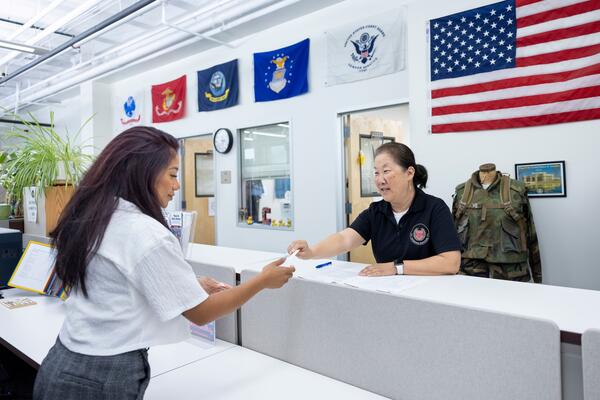Every new technology brings with it a moment of reckoning and a lot of noise. Higher education has always had its share of both. We’re good at asking questions, kicking the tires, holding things at arm’s length until we’re sure it’s worth leaning in. But AI hasn’t given us that luxury. It arrived fast, and it arrived everywhere. And so here we are: adapting syllabi, revisiting assessments, trying to imagine what teaching looks like when the work of thinking and writing and making can now be shared with a machine.
It’s easy to feel like we’re supposed to become AI experts overnight, or like our value is being called into question. But I don’t think either is true. The real challenge, the real opportunity, is to understand how this new partner might show up in the work we already do. The intellectual work. The teaching work. The deeply human work.
That starts by asking better questions – not just “What can AI do?” but “What kind of thinking does good teaching really require?” If we can name that, we can start to see where AI fits and where it doesn’t.
Jared Spataro, Microsoft’s Corporate Vice President for AI at Work, offered a helpful frame for understanding AI’s potential. He identifies five key cognitive tasks that define knowledge work: perceiving, understanding, reasoning, executing, and creating. I think this framework can be translated to the world of higher ed, and the work that faculty do. Because whether we’re designing curriculum, guiding discussion, mentoring students, or shaping institutional strategy, we’re doing some blend of those five things. And by looking closely at how they show up in our work, we can start to imagine how AI might support, not replace, the best of what we do.
1. Perceiving
Perceiving is about seeing what’s really there – what’s in front of us, and what might be hidden underneath. It’s the first move of any good teacher or designer: noticing. Noticing what students understand and what they don’t. Noticing patterns in discussion boards, in assignment uploads, in the quiet absence of a student who was once engaged. Perception is where reflection begins.
AI can help here by extending human observation. Imagine tools that model thousands of student submissions and flag potential misunderstandings. Or dashboards that surface patterns in feedback across multiple course sections. Or sentiment analysis that gives faculty a pulse on how students are responding to a unit in real time. These aren’t just speculative. Georgia State University’s implementation of predictive analytics has significantly improved student outcomes, especially for underrepresented groups (Dimeo, 2017).
And in my own work, I’ve seen how AI-powered tagging and clustering can help make sense of the digital exhaust students leave behind. During a review of some end of course survey responses, I used a language model to surface common themes in open-ended student responses. What might have taken hours of coding was compressed to minutes, giving me more time to focus on what really matters: how to respond, how to improve, how to connect.
When we talk about perceiving, we’re really talking about attention. AI can expand the reach of our attention—but it’s still up to us to decide where to look, and what to do with what we find.
2. Understanding
Understanding sits at the core of what faculty do. Whether we’re preparing to teach a new course or guiding a student through their first research project or writing up our own research, we’re spending time interpreting. This kind of work takes time and attention, a willingness to sit with uncertainty. And it’s where AI, when used carefully and with intention, can help.
In my own experience, I’ve used generative tools to scan large sets of institutional policy documents to better understand how decisions are communicated, and where inconsistencies emerge. What would have taken a full afternoon of toggling between tabs and highlighting paragraphs became a manageable, interpretable task, one that still needed my judgment, but got me there faster.
When AI can support us in making sense of large volumes of information, summarizing texts, comparing perspectives, identifying patterns, we free ourselves up for the more valuable intellectual work: asking better questions, and spending more time with the answers that matter. It’s about capacity.
Recent studies point to this as a growing area of impact. In a 2023 EDUCAUSE report, researchers note that AI’s ability to “curate and synthesize complex information” has emerged as a top priority for institutions looking to support both faculty productivity and student success (Pelletier et al., 2023). That doesn’t mean outsourcing the work of understanding, but it might mean sharing the load.
As Spataro puts it, these systems can “interpret, analyze, and generate vast amounts of text data,” but it’s up to us to bring interpretation, context, and care (2025). Used well, they don’t replace the act of understanding but they expand the space we have to do it well.
3. Reasoning
Tools that can break a complex task into parts, hold multiple threads in play, and adjust course as they go? That’s thinking and reasoning, and it can be put to work for us. Imagine planning a new course. You’re juggling student needs, institutional requirements, disciplinary content, pedagogical practices, assessment design, and accessibility considerations. AI can now meaningfully assist in that process by helping you reason your way through the options. I’ve used it to test weekly structures, re-sequence modules, generate alternate assessments keyed to different learning outcomes. It’s not always right. But it’s responsive.
This is what Spataro points to when he describes reasoning models’ capacity to navigate multistep challenges. And it’s what others are beginning to explore too. The 2024 Stanford Institute for Human-Centered AI report notes that models like GPT-4 are now outperforming the average human on tasks like LSAT logical reasoning questions, tasks that require inference, not recall (Stanford HAI, 2024). It’s not just that AI can make suggestions. It can anticipate consequences. It can debug your logic. It can help you think.
But it doesn’t replace the thinking. That means we need to stay in the loop. Because just like a teaching assistant who works fast but occasionally misses the nuance, these tools need supervision. The real value is in the collaboration. You bring the goals, the context, the judgment. The system brings the speed, the range, and the willingness to try again.
4. Executing
One of the most immediate shifts many faculty feel with these tools is in execution. Not in some futuristic, sci-fi sense, but in the simplest, most grounded way: things just get done faster. And not just routine things. Writing the first draft of an announcement. Reformatting a rubric. Creating a visual from a block of text. Summarizing student feedback across discussion boards. These are tasks that used to chip away at your time, that required a certain kind of attention and structure you didn’t always have at the end of the day. Now they can happen in seconds. Not perfect, but done. Or at least started, ready for you to refine, revise, and finalize.
In my own work, this means I don’t get stalled as easily. If a meeting runs long and I lose the hour I had planned to draft a guidance doc for a new course design initiative, I don’t start from zero later. I sketch the intent in a few lines, and the system scaffolds a first version. I get to come in as editor, refining and recentering. And yes, sometimes rejecting and starting over.
What’s changed isn’t just speed. It’s how close we can get from idea to action without needing to switch tools, start a new doc, find the right template. Execution becomes lighter. It gets folded into the flow. And for faculty navigating a day that might include grading, advising, committee work, and prepping for class, that lightness matters. But we should be careful here. The goal isn’t to turn every task into a race to the bottom. The speed is a gift only if we use the time it gives us well. Execution, in this new context, isn’t about doing more. It’s about clearing space to do what matters.
5. Creating
Creativity sits at the heart of so much work that faculty do. It’s how we see ourselves, not just as transmitters of knowledge, but as makers. We write, design, shape experiences. We revise courses to better fit the needs of a new cohort, craft discussion prompts that pull students deeper, build assignments that didn’t exist five years ago. Creativity is where our identities as scholars, teachers, and thinkers converge. So it’s no surprise that when people hear about AI “creating,” it sparks something between skepticism and alarm. And I get that.
But here’s where I land: this kind of creativity isn’t competition. These tools don’t originate like we do. They don’t generate ideas out of passion or lived experience. But they can be astonishingly good at offering sparks, those half-formed ideas, raw drafts, unexpected juxtapositions. In my own work, I’ve used them to draft module overviews that I later rewrite completely, but which help me see where I’m being too vague or too dense. I’ve used them to riff on potential assignment prompts, not to choose one blindly, but to scan for a new angle or a better tone. Sometimes, I reject it all. But I always walk away with more clarity about what I think.
That’s the shift: using the tools not to replace our voice, but to sharpen it. Not to outsource our thinking, but to reflect it back in new forms. Of course, this only works if we stay present in the process. If we hold fast to our criticality, our nuance, our sense of context. That’s the work. That’s the art. And as Spataro reminds us, the best ideas don’t care where they came from—they care what we do with them next (2024).
Why This Matters
I was working with a group of faculty from different disciplines demoing a few uses of generative tools in course development. We’d just finished a quick example, generating some low-stakes writing prompts for a discussion board. One person leaned back, arms crossed. “This is fine,” they said. “But the question is: what kind of teacher does this make me?”
It’s a great question. And I think the answer is: it makes you a teacher who’s choosing. Choosing how to spend your time and choosing where your expertise matters most. Choosing when to hand something off to the machine and, most importantly, choosing when to hold on tight because the human parts are the whole point.
That’s why I’ve stayed close to these five cognitive tasks. Because none of this matters unless we connect it to the real work we do. The knowledge work. The pedagogical labor. The thinking, the care, the creative decisions.
These five domains – perceiving, understanding, reasoning, executing, creating – aren’t abstract categories or corporate taxonomies. They’re a mirror of our everyday academic labor. They map how faculty prep a new course, evaluate student performance, write feedback, collaborate with colleagues, design new programs, interpret policy, serve on committees, apply for grants, rethink curriculum. This is what it means to work in higher ed. And these are the places where AI is entering.
So when we talk about adoption or training or integration, we’re not just talking about tools or workflows. We’re talking about how we think. How we value time. How we make meaning. And whether we can build systems, technological and human, that let us spend more of our energy on the parts of this job that matter most.
Dr. Nathan Pritts is Professor and Program Chair for First Year Writing at the University of Arizona Global Campus where he also serves as University Faculty Fellow for AI Strategy. He leads initiatives at the intersection of pedagogy, design, and emerging technologies and has spearheaded efforts in the strategic implementation of online learning tools, faculty training, and scalable interventions that support both educators and students. His work brings a humanistic lens to the integration of AI—balancing innovation with thoughtful pedagogy and student-centered design. As author and researcher, Dr. Pritts has published widely on topics including digital pedagogy, AI-enhanced curriculum design, assessment strategies, and the future of higher education.
References
Dimeo, J. (2017, July 18). Georgia State improves student outcomes with data. Inside Higher Ed. https://www.insidehighered.com/digital-learning/article/2017/07/19/georgia-state-improves-student-outcomes-data
Pelletier, K., Robert, J., Muscanell, N., McCormack, M., Reeves, J., Arbino, N., & Grajek, S., with Birdwell, T., Liu, D., Mandernach, J., Moore, A., Porcaro, A., Rutledge, R., & Zimmern, J. (2023). 2023 EDUCAUSE Horizon Report: Teaching and Learning Edition. EDUCAUSE.
Pritts, N. (2025, March 19). Supporting the Instructional Design Process: Stress-Testing Assignments with AI. Faculty Focus. https://www.facultyfocus.com/articles/teaching-with-technology-articles/supporting-the-instructional-design-process-stress-testing-assignments-with-ai/
Spataro, J. (2025). AI at Work: Coming to Terms with AI’s Cognitive Inflection Point. Microsoft WorkLab. https://www.microsoft.com/en-us/worklab/ai-at-work-coming-to-terms-with-ais-cognitive-inflection-point
Stanford Institute for Human-Centered AI. (2024). AI Index Report 2024. https://aiindex.stanford.edu/report/










